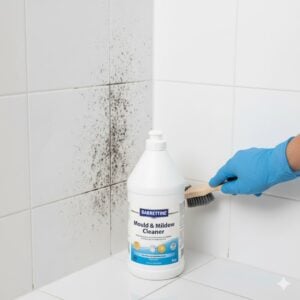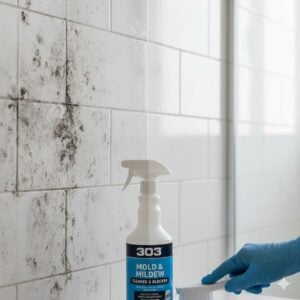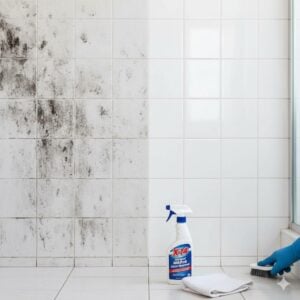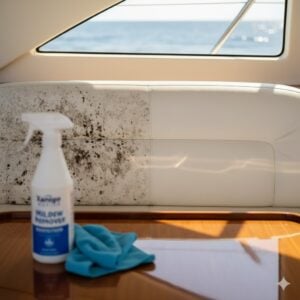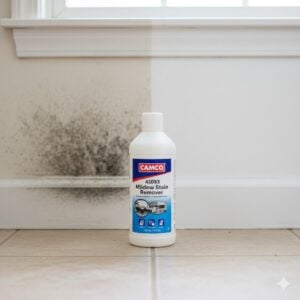Hello, dear reader! When faced with the aftermath of a loved one’s passing, the cost of biohazard Cleanup After Death Cost can be a pressing concern amidst the grief and arrangements that need attention. It’s essential to understand the factors that influence these costs to make informed decisions during such challenging times. We at Bio On are here to guide you through this with sensitivity and expertise, shedding light on what to expect financially and why this service is crucial for safety and well-being.
Table of Contents
Toggle#1 The Importance of Professional Biohazard Cleanup
Understanding the importance of professional biohazard cleanup after a death cannot be overstated. Biohazards refer to any biological substances that pose a threat to human health, including blood, bodily fluids, and other potentially infectious materials. After a death, especially in cases of unattended death, suicide, or trauma, these substances can be present and require specialized cleaning techniques to ensure the safety of living occupants and the integrity of the property.
Firstly, biohazard cleanup goes beyond just removing visible traces of blood or bodily fluids; it involves ensuring that the environment is free from any infectious agents that can cause diseases. Pathogens such as HIV, hepatitis B and C, and other viruses can survive in bodily fluids for days and sometimes weeks, depending on the conditions. Without professional intervention, these biohazards can pose serious health risks to family members, property owners, and anyone coming into contact with the affected area.
Professional cleanup teams are equipped with the necessary personal protective equipment (PPE), industrial-grade cleaning agents, and tools required for safe and effective biohazard remediation. This equipment includes but is not limited to protective suits, gloves, masks, and specialized cleaning solutions designed to kill pathogens on various surfaces. These teams also follow strict protocols to avoid cross-contamination, ensuring that biohazards are not spread to unaffected areas during the cleanup process.
Another critical aspect of professional biohazard cleanup is proper disposal of contaminated materials. This includes anything that cannot be thoroughly cleaned and disinfected, such as carpeting, furniture, or personal items that have come into contact with biohazards. Professional teams have access to licensed medical waste disposal facilities, where these materials can be safely incinerated, preventing any potential environmental contamination or health risks to the public.
Moreover, professional cleanup services are familiar with the legal and regulatory requirements related to biohazard remediation. Different jurisdictions may have specific guidelines for the handling, transportation, and disposal of biohazardous waste. Compliance with these regulations is crucial to avoid legal repercussions and ensure that the cleanup process upholds public health standards.
Finally, the emotional toll of dealing with a death, particularly that of a loved one, can be overwhelming. The process of cleaning up after such an event can add an additional layer of trauma and distress. Professional cleanup services offer a compassionate approach, handling the practical aspects of cleanup with sensitivity and respect for the grieving process. This allows families to focus on their emotional well-being and the process of healing, rather than the daunting task of biohazard remediation.
In conclusion, the role of professional biohazard cleanup services is critical in managing the aftermath of a death. Their expertise not only ensures the elimination of health risks associated with biohazards but also provides peace of mind during a difficult time. By entrusting this task to professionals, families and property owners can ensure that the cleanup is conducted safely, thoroughly, and compassionately, allowing them to focus on more personal matters of coping and recovery.
#2 Factors Affecting Biohazard Cleanup Costs

The cost of biohazard cleanup after a death is influenced by several critical factors, each adding layers of complexity to the process and affecting the overall financial impact. Understanding these factors can help in preparing for the unexpected costs associated with such a delicate and necessary service.
Size of the Affected Area: The extent of the area that requires cleanup plays a significant role in determining the cost. A larger area not only means more time spent cleaning but also increases the amount of cleaning material needed. In instances where the contamination spreads over multiple rooms or involves extensive areas within a property, the cleanup effort becomes more extensive and, by extension, more expensive.
Level of Contamination and Materials Involved: The degree of contamination and the types of materials contaminated are pivotal in assessing cleanup costs. Different materials absorb biohazards differently, with porous materials like carpet and drywall requiring more intensive cleanup or even replacement. The presence of hazardous materials, such as bloodborne pathogens, significantly increases the complexity of the cleanup process, necessitating specialized cleaning agents and techniques to ensure a thorough decontamination.
Location and Accessibility of the Site: Accessibility to the cleanup site can also impact the cost. Locations that are difficult to access may require additional resources or specialized equipment to reach and clean effectively. For example, a high-rise apartment may present more logistical challenges than a suburban home, potentially increasing the cost.
Required Time Frame for Completion: The urgency of the cleanup can influence the cost as well. An immediate response, often necessary to prevent further contamination or to allow for the timely return of the property to a safe state, may incur higher charges due to the need for rapid mobilization of the cleanup team and resources.
Understanding these factors is crucial for anyone facing the necessity of biohazard cleanup after a death. Each factor contributes to the overall complexity and cost of the cleanup process, making it essential for professional services to assess the situation thoroughly before beginning their work.
This comprehensive approach ensures that all aspects of the cleanup are accounted for, allowing for an accurate estimate and efficient execution of the necessary services. It also highlights the importance of professional expertise in managing such sensitive and potentially hazardous situations, ensuring safety, compliance with regulations, and peace of mind for those affected.
#3 Average Cost Range and What Influences It
The average cost range for biohazard cleanup after a death varies significantly, influenced by a myriad of factors previously discussed. Breaking down these costs can provide insight into what families and property owners can expect financially when faced with the necessity of such services.
Labor costs constitute a significant portion of the overall expenses. The expertise and risk involved in biohazard cleanup justify the high cost of labor. Professionals equipped with specialized training in handling hazardous materials, understanding of legal regulations, and psychological preparation for working in emotionally distressing environments are compensated for their comprehensive skill set. The number of technicians and the time spent on the cleanup directly impact the cost.
Materials and equipment used in the cleanup process also contribute to the expenses. Industrial-grade disinfectants, protective gear, specialized tools for safely removing contaminated materials, and air purifiers for restoring air quality are among the essentials. The cost of these materials can add up, especially in cases requiring extensive cleanup over large areas or where the contamination is severe.
Disposal fees are another critical component. Biohazardous waste must be disposed of according to strict regulations to prevent any risk to public health or the environment. This disposal involves transporting the waste to certified facilities, which can incur considerable fees depending on the volume and nature of the material being disposed of.
Scenarios affecting the cleanup process—and thereby its costs—include the circumstances of the death. Unattended deaths may result in more significant decomposition, which complicates the cleanup process and increases costs. Similarly, deaths involving trauma may require more extensive cleanup efforts due to the spread of biohazardous materials throughout the site. Each scenario demands a tailored approach, impacting the overall cost.
Insurance coverage can mitigate some of these costs, though policies vary widely in terms of what is covered. It’s crucial for policyholders to understand the specifics of their coverage in the context of biohazard cleanup. In cases where insurance provides partial or full coverage, the financial burden on families and property owners can be significantly reduced.
This detailed cost breakdown is essential for setting realistic expectations and facilitating informed decisions during what is often a challenging and emotional time. Transparency in quoting and detailed explanations of each cost component can help those affected understand the value and necessity of professional biohazard cleanup services, ensuring safety and compliance with health regulations.
#4 Insurance and Financial Assistance

Navigating the complexities of insurance coverage and financial assistance for biohazard cleanup after a death is a crucial step for families and property owners. This process often involves understanding policy specifics, identifying available assistance programs, and effectively communicating with insurance providers to leverage the support available.
Insurance policies vary greatly in their coverage of biohazard cleanup costs. Some homeowner’s and renter’s insurance policies include specific provisions for biohazard remediation, particularly in the event of a death. However, coverage limits, deductibles, and the nature of the incident can all influence the extent to which these costs are covered. It’s imperative for policyholders to review their policies carefully or speak directly with their insurance agents to understand their coverage. This understanding can significantly affect financial planning and decision-making in the aftermath of a tragic event.
Financial assistance programs may also be available to help cover the costs of biohazard cleanup. Various government and non-profit organizations offer grants and assistance for families dealing with unexpected deaths. These programs can provide critical financial support, but navigating the application process and meeting the eligibility criteria can be challenging. Information about such programs is often available through local health departments, crime victim assistance programs, or organizations dedicated to supporting individuals in grief.
Effective communication with insurance providers is essential. Initiating the conversation as soon as possible can facilitate a smoother process. It’s beneficial to document all communication, keep detailed records of the cleanup costs, and, if necessary, obtain multiple quotes for the cleanup services. These steps can provide a strong foundation for insurance claims and discussions regarding coverage. Additionally, in situations where insurance coverage is partial or unclear, understanding the negotiation process can be invaluable. Some cleanup services may also offer assistance with insurance claims, providing expertise and support to ensure that families receive the maximum benefit available to them.
Understanding the financial aspects of biohazard cleanup after a death is a complex but crucial part of managing the aftermath. By thoroughly exploring insurance coverage options, seeking out financial assistance, and maintaining clear communication with insurance providers, families can alleviate some of the financial burdens associated with biohazard cleanup, allowing them to focus more on healing and less on financial concerns.
#5 Case Studies: Real-Life Cost Scenarios
Case studies offer a real-world perspective on the costs associated with biohazard cleanup after a death, illustrating how various factors come into play, affecting the overall expenses. Through anonymized examples, we can understand the financial implications of different cleanup scenarios, ranging from unattended deaths to accidents and suicides.
Case Study 1 involves an unattended death in a small apartment, discovered several days after the fact. The decomposition process had begun, affecting a single room but requiring specialized cleaning solutions and techniques to address the biological hazards present. The cleanup involved not only the removal of biological matter but also the restoration of air quality and the disposal of some furniture and personal items. The cost reflected the intensive labor, specialized equipment, and disposal fees required, totaling approximately $4,000.
Case Study 2 presents a scenario involving a suicide in a family home. This tragic event resulted in a significant biohazard contamination in multiple rooms, with extensive blood and bodily fluids spread across various surfaces, including carpets and walls. The cleanup required multiple days of work by a specialized team, using advanced cleaning agents and biohazard disposal techniques. The complexity and scope of the cleanup led to costs nearing $10,000, partially covered by homeowner’s insurance.
Case Study 3 describes an accident in a commercial property, where a worker was fatally injured, leading to biohazard contamination in a high-traffic area. The cleanup needed to be conducted swiftly to minimize business interruption, requiring overnight work by a large cleanup team. This scenario highlighted the cost implications of urgent cleanup services and the additional charges for after-hours work. The total cleanup cost was around $7,500, with business insurance covering a portion of the expenses.
These case studies demonstrate the variability in cleanup costs, influenced by factors such as the extent of contamination, the environment in which the incident occurred, the urgency of the cleanup, and the potential coverage provided by insurance. Budgeting for such unexpected events can be challenging, but understanding the potential costs involved can help individuals and families prepare for and navigate these difficult situations more effectively.
The lessons learned from these case studies emphasize the importance of professional cleanup services in managing biohazard situations effectively. While the costs may vary significantly, the need for expert handling of these sensitive and potentially hazardous situations remains constant. By analyzing real-world examples, individuals and property owners can gain insights into budgeting for and understanding the complexities of biohazard cleanup costs.
Why Choose Bio On for Your Cleanup After Death Cost
Bio On stands as your unequivocal solution for biohazard cleanup needs because of its comprehensive approach to safety, privacy, and compliance. With a team of experts trained to handle the most sensitive situations, Bio On ensures that each cleanup task is performed with the utmost respect and professionalism. Understanding the emotional toll such incidents can bear, the service prioritizes compassionate interaction, offering support and guidance throughout the process. Furthermore, Bio On’s adherence to stringent health and safety regulations guarantees a thorough cleanup, safeguarding against any potential health risks. The availability of a 24/7 free consultation service provides immediate assistance, making Bio On an accessible and reliable partner in times of need.
Conclusion
Understanding the nuances of biohazard cleanup after a death is pivotal in navigating the complexities of such challenging times. The costs involved are influenced by various factors, each significant in its own right, from the extent of the affected area to the urgency of the cleanup. Bio On offers expertise and compassionate services to manage these sensitive situations, ensuring safety and compliance with regulations. For personalized advice and support tailored to your specific circumstances, don’t hesitate to reach out through the WhatsApp button for a free consultation. Bio On is here to assist, providing clarity and assistance every step of the way.








